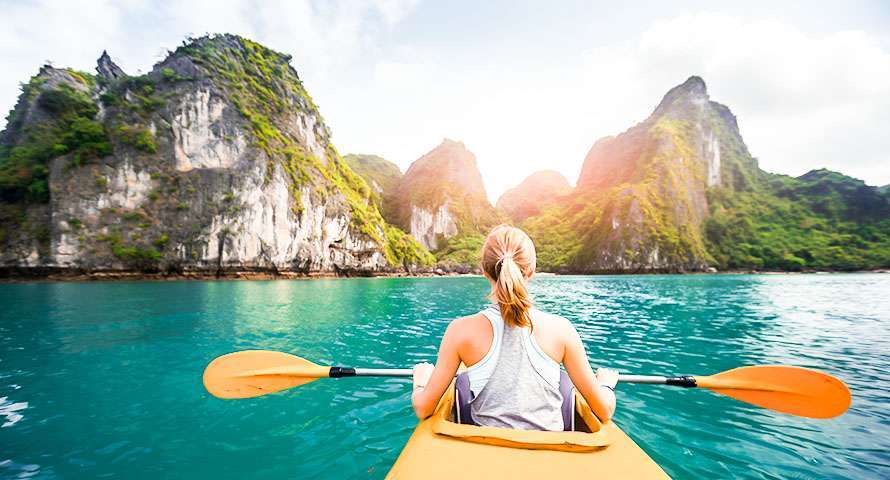Maneuvering a kayak often requires some simple but strategic techniques. Amongst these myriad techniques mastering a few simple ones give a big boost to kayak handling ability and increases safety. Heeling or Leaning is a simple technique, that when learned not only reduces the time to spin but also increases the paddler’s safety when caught in eddy currents, peel outs and ferries. Edging on the other hand is the technique to use one’s body to aid in the maneuvering of the kayak, especially when executing a turn. With routine practice, both edging and healing become natural reflexes and allows the paddlers to execute better motion control.
The following practices can help you develop these reflexes:
Shore Practice
One of the simplest methods of practicing edging and leaning on a Kayak can be executed on the shore and without the fear of tipping over into the water. With the head centered with the boat, the paddler shifts the bodyweight to one hip and lifts the opposite knee, thus forming the C shape. The trick is to control the curve of the shape, such that the center of the balance doesn’t get out of the kayak’s center of buoyancy.
Assisted Practice
Often done in shallow waters, the assisted practice involves one person to be in the water next to the kayak and guard the gunwale. The role of the guard is to ensure that the Kayak doesn’t turn to overthrow the paddler into the water. With the kayak protected from toppling over the paddler practices edging and leaning, and is quickly able to identify the toppling point. An alternative method of conducting assisted practice can be executed on dual paddler canoes, where each paddler takes turns to guard and execute.
Heel & Hold
Once the basics of the technique are grasped, it is time to practice heel and hold. As the name suggests, heel and hold involve leaning to one side and then holding the position for a minimum of a minute. The process involves edging the boat onside with the paddle kept in a low brace position (such that low brace can be executed if need so arises) and holding the lean-to try and minimize the wobble on water. The same process is repeated on the offside but with a high brace position.
Heel & Paddle
The closest to real-time maneuvering is the practice of heel and paddle. It is executed by keeping the boat leaned to the onside and continues to paddle straight. Usually, at the time of practicing heeling is maintained for at least three minutes. Variations are practiced on the offside and in a combination of various brace positions.
Land Practice
When the weather does not permit outdoor activity, the practice can continue on land using the Peppe method, developed by Jack Peppe – the noted American Canoe Association instructor and trainer. The method involves placing the canoes or kayaks on partially inflated inner tubes and not on the water. The technique is a great way to continue practice during the peak of winter.

